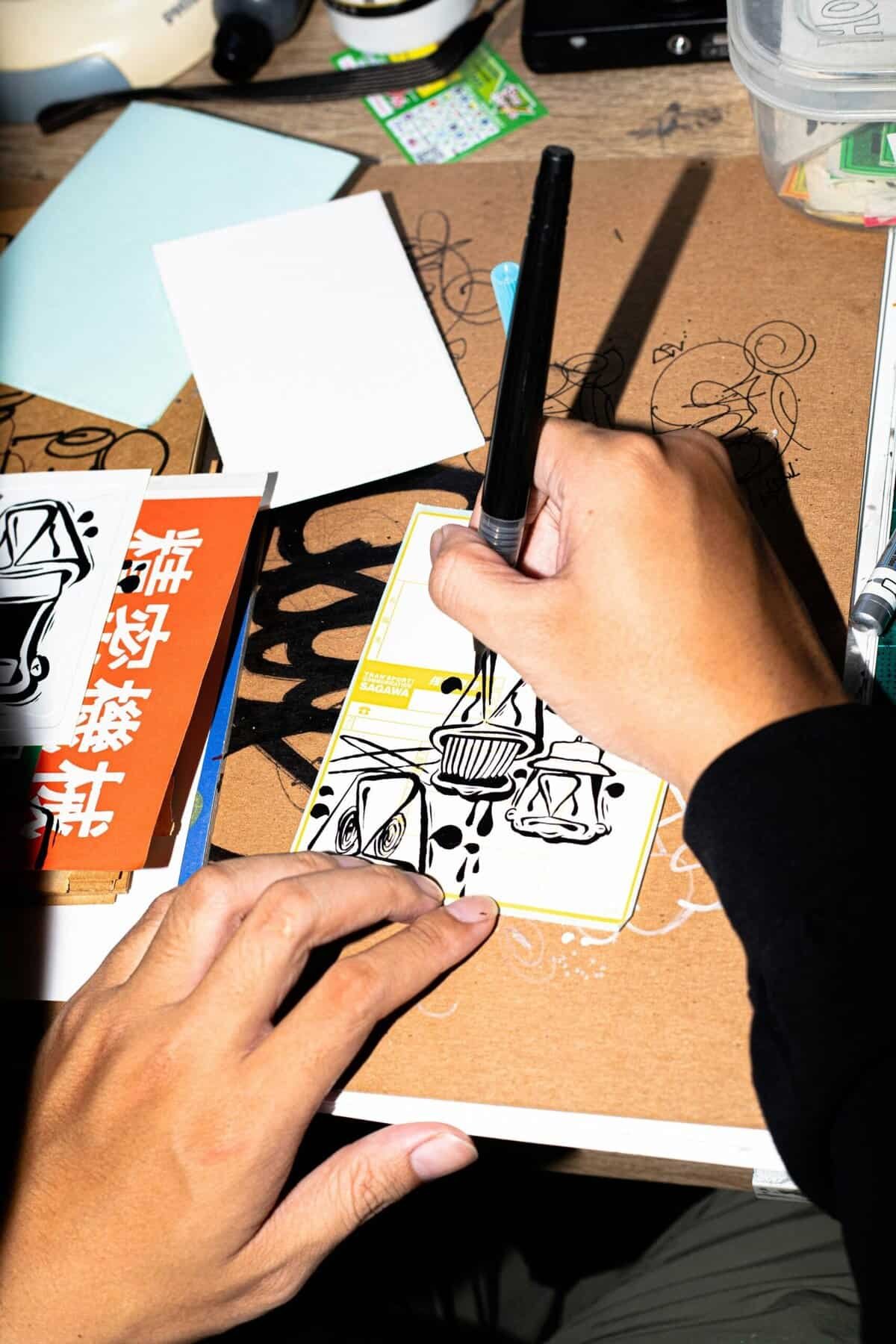Have you ever wondered what it takes to become a successful freelance illustrator in 2025? As the illustration industry continues to evolve with new technologies and trends, you might be considering turning your passion for drawing into a lucrative career. Why not? The world of freelance illustration is as dynamic as ever, offering a plethora of opportunities for creative individuals like you to showcase your talents to a global audience.
Understanding the Role of a Freelance Illustrator
Freelance illustrators create visual artwork that complements or tells a story, typically used in books, advertising, and digital platforms. Your primary role involves transforming ideas into compelling visuals that captivate an audience’s imagination. Unlike working in a traditional employment setting, freelancing allows you to choose your projects, clients, and work environment, thus giving you freedom and flexibility.
The Importance of Versatility
In 2025, versatility in your skills will be even more crucial. Being adaptable with a broad range of styles and mediums can set you apart in a crowded marketplace. You’ll need to master digital tools while maintaining a strong foundation in traditional illustration techniques. Understanding various artistic styles can help you cater to diverse client needs.
Essential Skills for Success
While you might be adept at illustrating, honing other skills can truly make you a well-rounded freelancer. Communication is key in understanding client requirements and conveying your artistic vision. Additionally, marketing skills can boost your visibility and attract clients. Basic financial literacy can help you manage your earnings and investments wisely. You might wonder, “Can you freelance with just Excel skills?” While Excel may not directly apply to illustration, having spreadsheet skills can be incredibly handy for budgeting, project management, and organizing client data.
Crafting Your Unique Portfolio
Your portfolio is your calling card. It’s what potential clients and collaborators look at to decide whether you’re the right fit for their project. In 2025, creating a diversified and robust portfolio is more essential than ever.
Selecting the Right Pieces
Choose illustrations that best represent your skills and style. Make sure each piece in your portfolio showcases a different technique, style, or subject matter. For instance, if you’re skilled in both vector illustrations and watercolor, display both to appeal to a broader client base.
Presentation and Accessibility
Ensure your portfolio is easily accessible online. Platforms like Behance, Dribbble, or your personal website provide an ideal space to showcase your work. A professional presentation, with high-quality images and descriptive captions, can reflect the level of professionalism you bring to your client interactions.

Building Your Brand and Online Presence
Creating a brand is about establishing a unique identity that clients can relate to and trust. It’s more than just a logo or catchy tagline—it’s about the values, style, and approach you consistently communicate through your artwork and interactions.
Developing a Personal Style
In a world of numerous illustrators, developing a distinct style can help you stand out. Your unique artistic voice can become a signature recognized by clients. Experiment with different techniques and subjects until you find a style that feels true to you and can consistently be recognized by others.
Social Media and Networking
Social media is a powerful tool for building an audience and generating leads. Share your work regularly on platforms like Instagram, LinkedIn, and Pinterest. Engaging with communities in places like Reddit or specialized forums can also help establish connections and attract potential clients. Networking is about creating genuine relationships, so engage sincerely with others’ work, offer constructive feedback, and participate in discussions.
Navigating Client Relationships
Working with clients as a freelancer requires diplomacy, tact, and clear communication. Each client will have unique expectations, and your ability to manage these effectively can make or break your project success.
Establishing Clear Communication
Set clear expectations from the outset. Discuss deadlines, deliverables, and revisions before starting any project. Regular check-ins with clients help maintain alignment and catch any potential issues early. Using project management tools can aid in keeping everyone on track.
Handling Feedback and Revisions
Not all feedback will be positive or easy to accept, but it’s crucial to remain professional. Listen carefully, and see if changes are feasible within the project’s scope. Offering your expert advice while being open to taking client suggestions can foster trust. Remember, revisions are a natural part of the creative process and an opportunity for you to enhance the final outcome.

Pricing Your Work Appropriately
Figuring out what to charge for your work can be one of the toughest parts of freelancing. It’s essential to strike a balance between valuing your art and staying competitive.
Factors to Consider
Consider factors like your experience level, the project’s complexity, and the client’s budget. Market research is crucial—identify standard industry rates for freelance illustrators with similar skills and experience. Transparency with your pricing from the start can avoid misunderstandings later.
Pricing Models
There are different ways to structure your pricing. Here are a few common models:
| Pricing Model | Description | Pros and Cons |
|---|---|---|
| Per Project | Charge a flat fee per completed project | Clear expectations, but estimating time can be hard |
| Per Hour | Charge based on hours worked on a project | Flexibility, but less predictable income |
| Retainer | Client pays a regular fee for ongoing work | Steady income, but may require regular availability |
Choose a model that aligns with your workflow and financial goals.
Leveraging Technology and Tools
In 2025, technology continues to shape the way freelancers create and share their work. Embracing digital tools and platforms can enhance your efficiency and broaden your capabilities.
Software and Hardware Essentials
Equip yourself with the right tools. A reliable computer, a quality tablet, and the latest illustration software are non-negotiables. Popular software like Adobe Illustrator, Procreate, and Clip Studio Paint offer robust tools for digital creatives.
AI and Automation
Artificial Intelligence and automation are playing an increasing role in streamlining workflows. Tools like Adobe’s AI-driven features or apps for automating mundane tasks can save time, allowing you to focus more on the creative process.

Continuing Education and Skill Development
The field of illustration is ever-evolving, and so should your skills. Dedicate time to continuous learning to keep your work fresh and relevant.
Workshops and Courses
Online platforms like Skillshare, Udemy, and Coursera offer courses in digital illustration, business management, and marketing—skills that can boost your career. Regularly attending workshops can also introduce you to new techniques and trends.
Experimentation and Artistic Growth
Don’t shy away from experimenting with new styles or mediums. This experimentation can lead to unexpected innovations or a new direction in your work. Keeping a sketchbook and dedicating daily time to personal projects can nurture your artistic growth.
Understanding Trends and Market Demands
Staying attuned to industry trends can help inform your creative direction and business decisions. Knowing what styles or themes are popular can give you an edge in a saturated market.
Current Trends in Illustration
While trends can fluctuate, some persist over time. Minimalism, retro aesthetics, and surrealism have maintained popularity across design disciplines. Identifying and adapting to these can help keep your portfolio fresh and in-demand.
Market Research
Consider conducting regular market research to understand your target audience better. Learning about the preferences and needs of different industries—be it publishing, advertising, or gaming—can help you tailor your offerings.

Balancing Creativity and Business
As a freelance illustrator, you wear many hats. While creativity is at the heart of your work, balancing business operations is crucial for sustainability.
Managing Your Time
Time management is key. Create a schedule that allows for dedicated creative time while also addressing administrative tasks. Tools like Trello or Asana can help keep you organized and ensure nothing slips through the cracks.
Financial Planning and Stability
Securing financial stability involves meticulous planning. Budgeting for lean periods and setting aside savings ensures peace of mind. Consider consulting a financial advisor to maximize your earnings and invest appropriately.
Challenges and Opportunities in 2025
Like any profession, freelancing comes with its unique set of challenges and opportunities. Being prepared for both can help you navigate your career more effectively.
Common Challenges
Freelancers often face inconsistent income, lack of benefits, and isolation. Building a network of fellow illustrators can provide support and opportunities for collaboration. Actively seeking client feedback can guide improvements and potentially open doors to more work.
Seizing Opportunities
Freelancing in 2025 offers exciting possibilities. The demand for digital content continues to grow, providing ample opportunity for illustrators. Embrace new horizons by exploring global markets or different industries.

The Future of Freelance Illustration
Looking ahead, the future of freelance illustration is bright. Advancements in technology, coupled with the growing demand for visual content, will likely foster more opportunities for skilled illustrators.
Emerging Technologies
Augmented Reality (AR) and Virtual Reality (VR) are poised to revolutionize the world of illustration. Understanding these technologies can position you as a forward-thinking illustrator. Consider investing in AR or VR training to stay ahead.
Global Opportunities
With remote work becoming the norm, illustrators have the chance to work with clients from around the world. This globalization opens doors to diverse projects and collaborations, enriching your portfolio and experience.
Taking the Leap into Freelancing
Deciding to become a freelance illustrator can be both exhilarating and daunting. But with the right preparation, mindset, and continual growth, you have every opportunity to succeed.
Starting Your Journey
Begin by setting clear goals and outlining steps to achieve them. Create a plan that includes building your portfolio, marketing your services, and networking with potential clients. Starting small, perhaps alongside a full-time job, can provide financial security as you grow your freelancing business.
Staying Inspired and Motivated
Amidst all the practicalities, never lose sight of your passion for illustration. Stay inspired by surrounding yourself with creativity—visit art exhibitions, join creative groups, and indulge in personal projects. Your unique vision and enthusiasm for your craft will keep you motivated, guiding you towards a thriving freelance career.
Explore these avenues and forge your path in the vibrant world of freelance illustration. With each brushstroke and digital pen mark, you’re creating not just art but your dream career.
